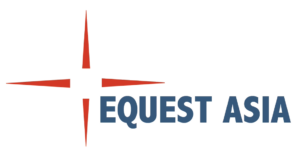Flow and sustainable happiness…
Flow – the secret of happiness Have you ever done an activity – a sport or something creative – where you have been totally absorbed in that exact moment, without a care about what is going on around you? Hungarian psychologist Mihaly Csikszentmihalyi, one of the pioneers of the scientific study of happiness, called this feeling ‘flow’ and says it is the key to happiness. He said: “The best moments in our lives are not the passive, receptive, relaxing times… The best moments usually occur if a person’s body or mind is stretched to its limits in a voluntary effort to accomplish something difficult and worthwhile.” At that moment when you forget yourself and only the thing you are doing at that moment matters, you have effortless control and Csikszentmihalyi says this is an optimum state of happiness. Lots of psychologists and theorists argue that happiness must be worked at to achieve, it doesn’t simply happen. It can be achieved by setting ourselves challenges (nothing too hard or too simple) and making them unique to our passions. We need to cultivate our own happiness and one way to do that is to work out when and how we can achieve flow. Flow happens on our journey towards completing – so for example, it is the creative process of writing a story or painting a picture, or it is what athletes refer to as ‘being in the zone’ when they are preparing or running a race. When we are totally immersed in something we give it our full attention and can forget all of our external issues and problems. Cziksentmihalyi stated that happiness comes from within us and is unique to US –our passions, our likes, what makes us tick. In 1990, he explained flow as: “a state in which people are so involved in an activity that nothing else seems to matter; the experience is so enjoyable that people will continue to do it even at great cost, for the sheer sake of doing it.” This is why it is so worthwhile to have hobbies in our lives and make the time to do the things we love to do. To achieve flow, Czikszentmihalyi said there are certain things to do and feel, such as having clear goals, allow awareness and action to meet, disregard time and allow self-consciousness to disappear. During ‘flow’ there is no worry about failing; instead we receive immediate feedback in the shape of gratification. So how do can we achieve flow on our lives? Csikszentmihalyi says that we need to immerse ourselves in an activity we can lose ourselves in. This will be different from one person to the next. It also requires us to practise mindfulness – being aware of the here and now. When we learn to enjoy the immediate experiences we face, we can experience flow and its benefits for our happiness.
Flow and sustainable happiness… Đọc thêm »




